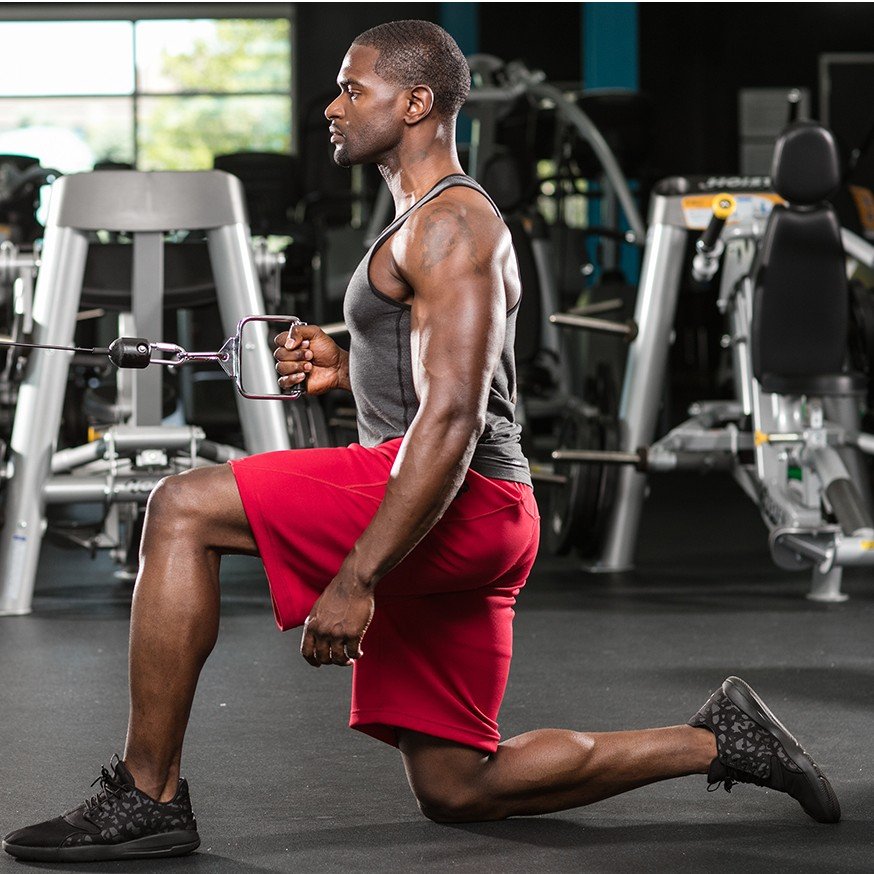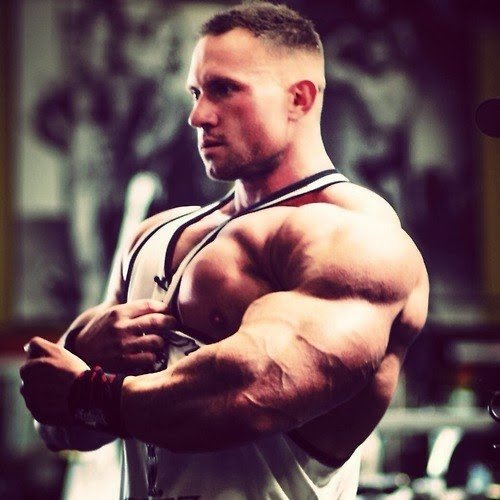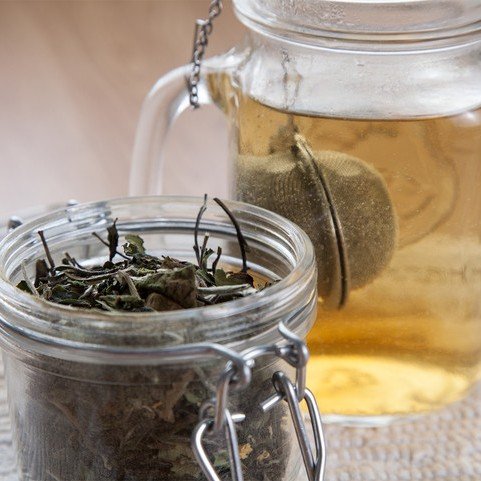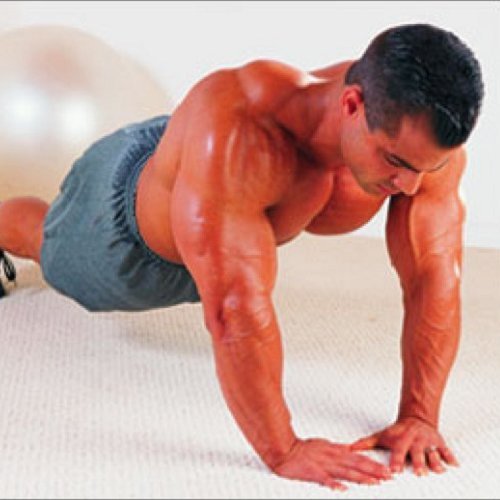You sit Too much. We all do. That much is well-known and discussed constantly, and as you may have heard, it can contribute to dysfunction in your hips, your shoulders, and your training overall. So what's the solution? Standing more? Sure, that's part of it. But so is moving your body through a wide variety of other positions, both in the gym and in life. Some of my favorites are variations on tall kneeling and half-kneeling.
Tall kneeling and half-kneeling postures get a lot of love these days from strength coaches due to the additional challenges they pose to the core, but they can also be magic for improving the function of the hips. This one-two of core and hips can lead to improved shoulder and hip mobility, which can improve issues down each kinetic chain, such as elbow and knee problems.
So where do you start? Here are some ways you can incorporate kneeling into your mobility and strength work, but also the way you rest. You can see all of them demonstrated in this video.
Mobility Movement 1: Half-Kneeling Compass
The hip joint is a ball and socket, meaning that it can move in a circle. Yet time and time again, I see coaches stretching only from front to back and beating the ever-loving hell out of the poor hip flexors that are clinging to the hip and spine for dear life. The harder you push in this limited range of motion, the harder they are going to cling. So instead of slamming your femoral head into the wall that is the acetabulum, let's go around this barricade.
Begin in a half-kneeling position, with one knee out in front and the other behind, with your rear toes on the ground. Step the front foot across so that it is outside the line of the back knee. From here, push your hips toward the front foot and tuck your tail, which will help engage the glutes and abs.
Walk your foot about 15 degrees so that it is now straight ahead. Repeat pushing the hips forward at each stage, moving the front foot and hip in approximately 15-degree increments until it is straight out to the side. This new final position is called "open half-kneeling," and it's a great way to mobilize your hips for squats.
Mobility Movement 2: Half-kneeling Elbow Drops and Rotations
From this open half-kneeling position, drop both elbows to the floor in front of you. You'll feel a major hip stretch. If you're able, and it's comfortable, reach one arm up to the ceiling in a spinal twist.
With both of the above positions, you can also work on improving your active range of motion by either lifting your front leg off the ground or doing a leg curl on the kneeling leg. This will help you really "own" the new range of motion you've opened up through the compass and hit some often-neglected movement patterns. If needed, hold on to something stable, like I do in the video.
Mobility Movement 3: Kneeling Rest Postures
Plenty of people love their standing desks. Some want to like them way more than they actually do. Luckily, standing and sitting aren't your only options at work or home. Whether you're on the computer or rewatching "Pumping Iron," you can get the benefits of kneeling postures simply by making them one of your resting postures.
Here's the thing: There is no ideal posture to hang out in all day. Instead, consider changing position frequently. You can sit some of the time, stand part of the time, kneel on a pad or ottoman, put one knee on an object with the other leg straight (either on the ground or out in a stretch...you name it.

Unlike sitting—or lazily standing with your elbows and upper body draped over your standing desk—kneeling and half-kneeling put the hips in extension. This can prevent your glutes from getting sleepy and hip flexors from getting stiff. If you're planning on lifting during your lunch break or after work, this could make a big difference in the quality and Safety of your training.
Strength Movements: Kneeling Upper-Body Pushes and Pulls
Doing some strength movements from tall kneeling and half-kneeling has a whole host of benefits:
- Reflexive core stabilization in a variety of hip positions, which is important for back, hip, and shoulder health
- Strength in a contralateral flexion/extension position (one hip extended, the other flexed)—like running, walking, or almost any athletic movement
- Glute activation and restored hip-flexor function (this is especially true with tall kneeling)
Two of my favorite exercises from half-kneeling are the single-arm bottoms-up kettlebell press, and the single-arm cable row. For both movements, work with the arm opposite the forward leg. So, a left-hand press means your right leg goes forward, and vice versa.

One additional benefit that warrants extra discussion here is the way working in a kneeling position can prevent compensations during upper-body work. Teaching movements while preventing compensations is a key component of physical therapy. Compensations happen when one area is too stiff or weak, and the neighboring muscles and joints take on the task of the slacker. To pick two common examples, your lower back has to try to do the work of your butt, and your shoulder has to try to compensate for the problems in your neck, scapula, or thoracic spine.
One way we can start to prevent some of these compensations in the upper body is to change the environment to make compensating more difficult, or nearly impossible. Tall-kneeling and half-kneeling variations are great for doing just that.
Bonus: Quadzillas and Kneeling Back Bends
This is a great movement that will simultaneously make your quads stronger and help you regain hip extension from excessive sitting.
Begin in a kneeling position with your feet flat on the floor. Extend the hips fully, and shorten your abs, like a small crunch. Slowly lower yourself down backward toward the ground. Each additional degree of range at the knee is going to increase the load on the quads. Be sure to squeeze your glutes, and avoid hyperextending at the lower back. Return to tall kneeling by contracting your quads. Done for reps, this is a great way to finish out leg day or simply provide a little accessory work at the end of your full-body session that will give you a good training effect while keeping you mobile.

No matter what you do in these positions, simply integrating them somewhere into your training or resting can improve your strength and function, ultimately allowing you to lift more weight for more reps. Even just doing your hammer curls from kneeling or half-kneeling will completely change the nature of the exercise with regard to your hips and core. Get them in the mix somewhere. Your hips and plenty else will thank me.
Source: Too




